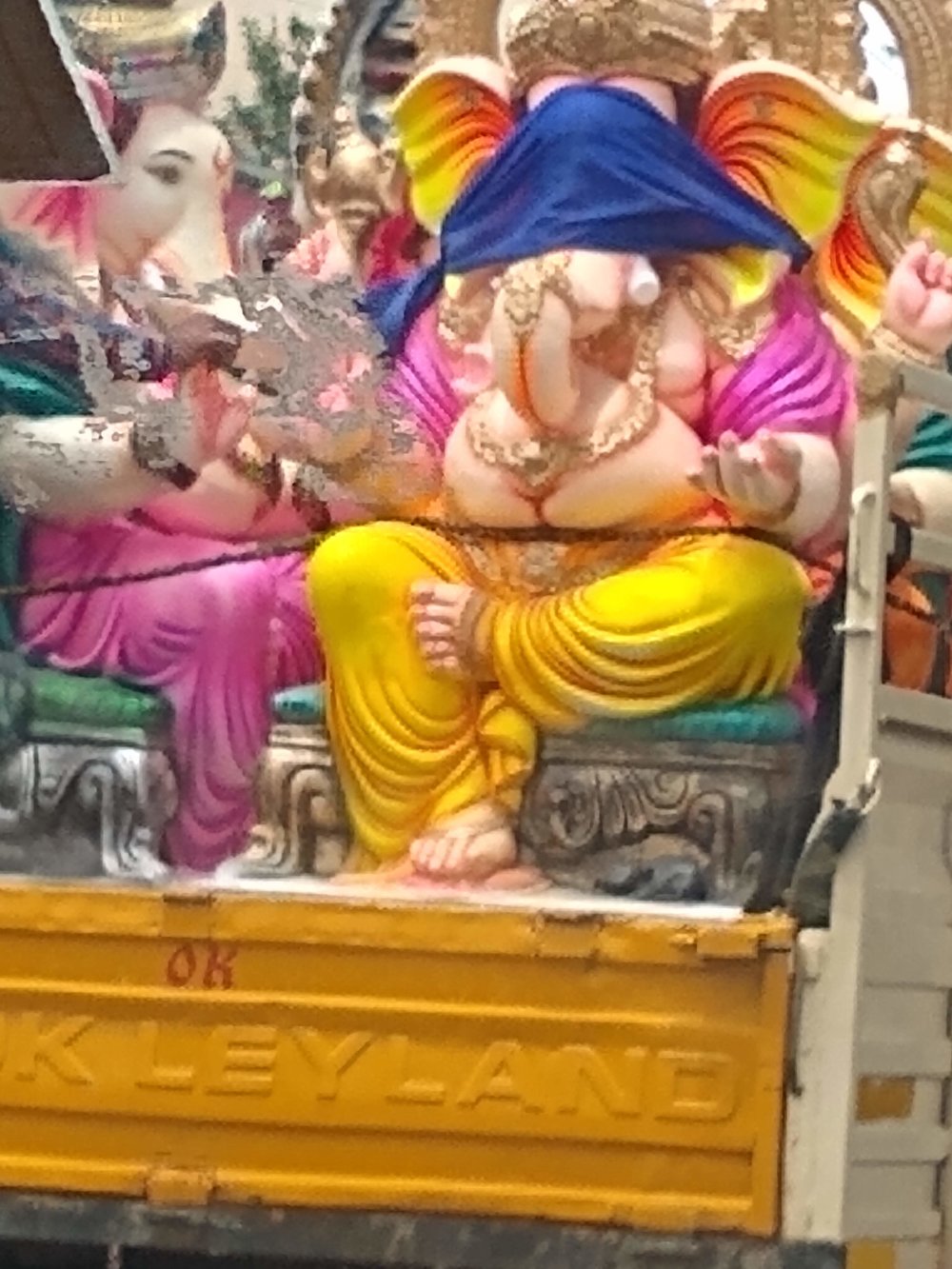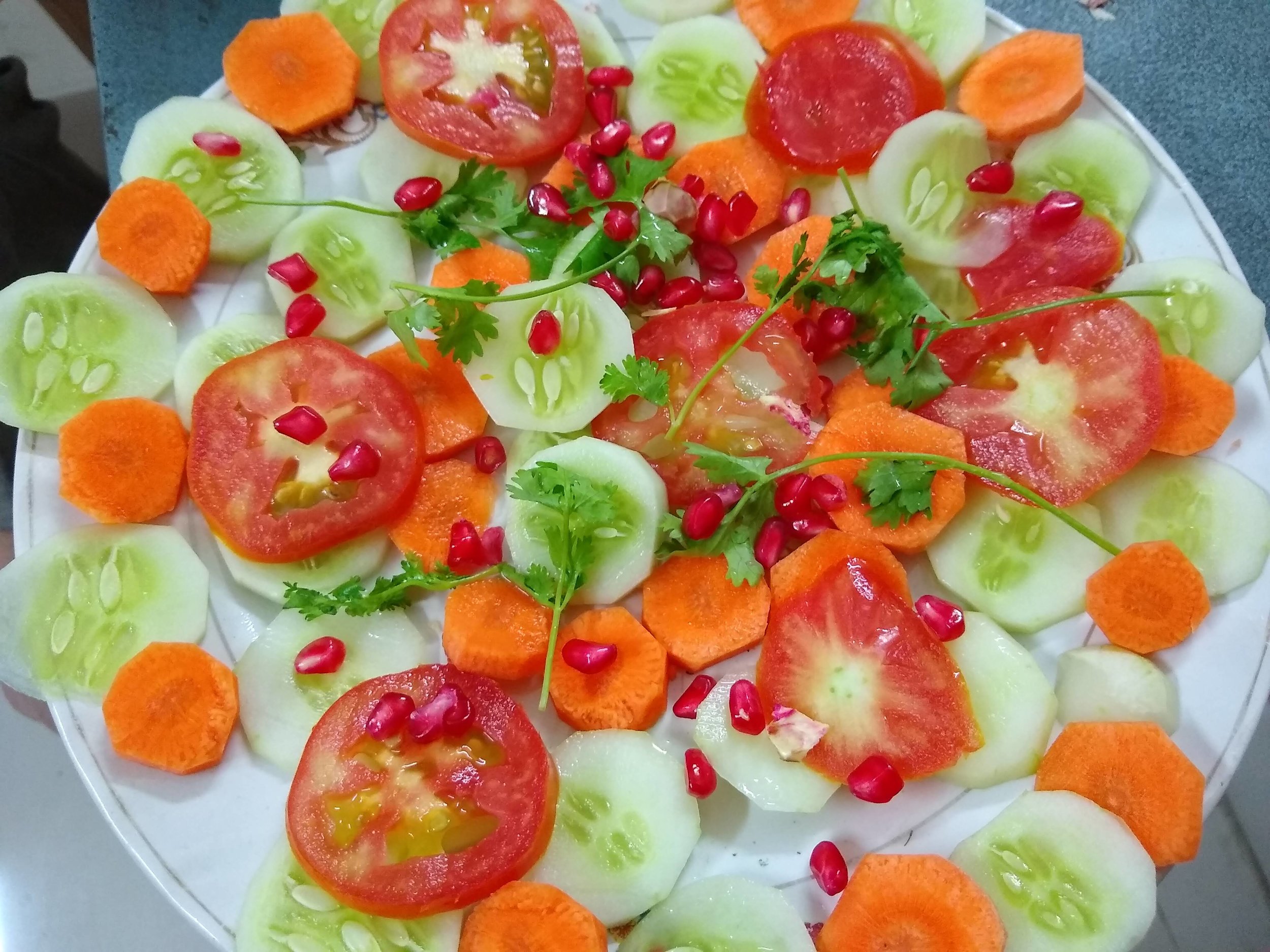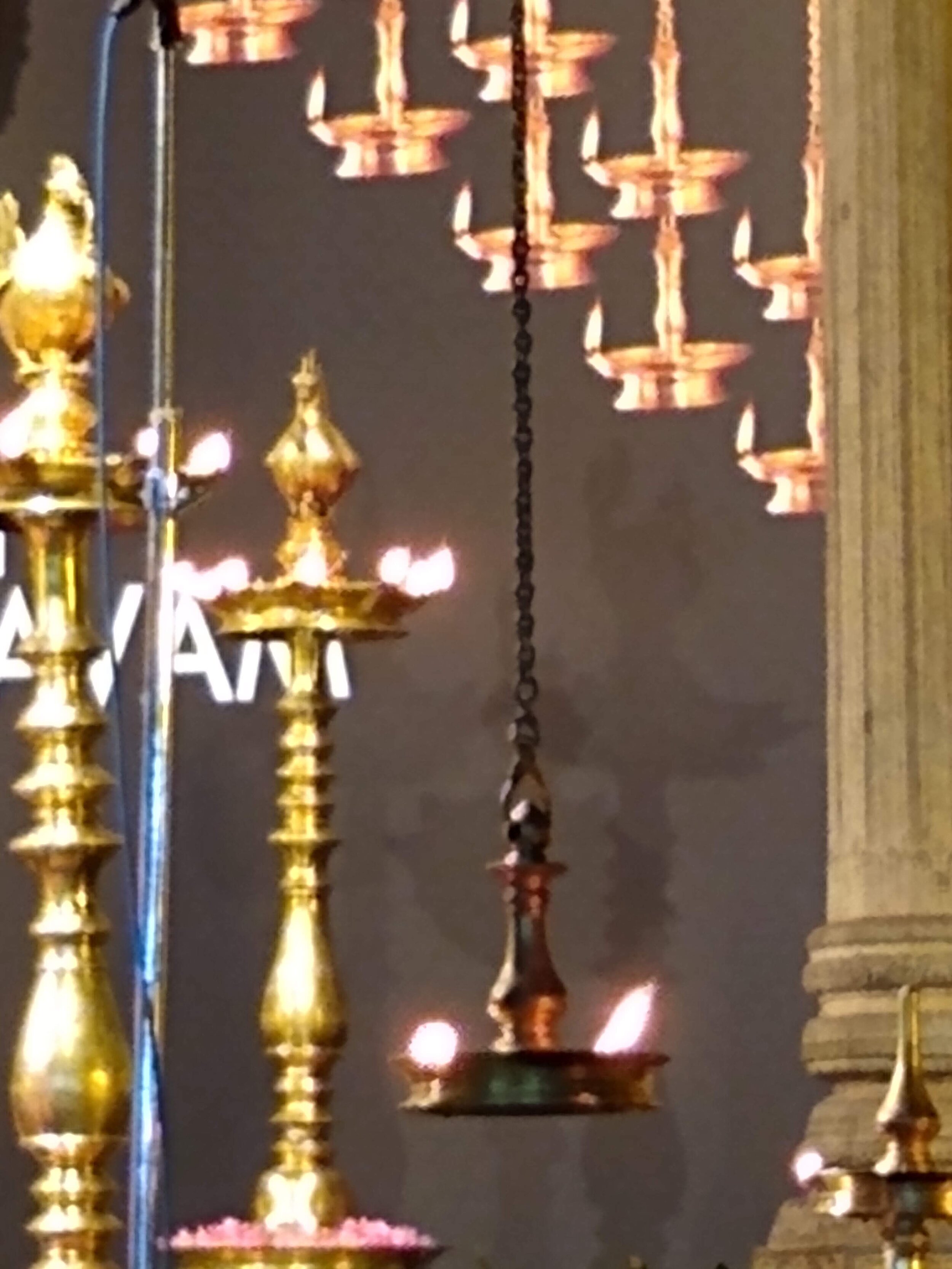All countries have days of celebration, feasts and festivals. In India, the calendar appears to be full of festivals. Many are celebrated with varying degrees of fervor in different parts of the country. A major festival is the celebration of the birthday (or homecoming) of the deity, Ganesha. The belief of the devout is that praying (offering pooja) to Ganesha on this day smooths all obstacles for the rest of the year and the projects undertaken will go to successful completion.
Growing up in India, besides the serious intent of the pooja, Ganesh Chathurthi (Vinayaka chavithi) had always been a favorite of us kids. First, there is the simple lovability of the image: what’s not to love about the playfully elephant headed boy-god that rides a rat and loves to eat? Then there’s the ritual of the pooja itself – piling on myriad kinds of leaves to an easy-to-follow cadence. The origin story is easy to follow, you’re rooting for the underdog and it had enough action (violence) to keep young kids enthralled. Naturally, good triumphs over evil – as always in such stories. And the food! Oh, what festival is complete without stuffing oneself on delicious food – and lots of it!
Now that we don’t participate in idol worship, we’re getting a different perspective on this festival, our first in this journey of discovery.
Importantly, the fun continues! We enjoyed the spirit of the festival and the food is still mouthwatering! Mom’s cooking is always special and we had the unique opportunity of having lunch with Rohini pinni, Lion annayya and Babayyagaru; dinner with Indira peddamma and Padmaja. In between, we met Sneha and Raga’s music teacher, Smt. Krishna Kumari Mokkarala and her friendly husband, Wing Commander (retd) M. Subrahmanyam. As we went from home to home, we had several traffic jams due to impromptu celebrations of installation of the Ganesha idol in various communities along the way.

The days leading to the festival saw colorful idols of Ganesha accumulating by the roadside, with shrouds (to both protect these idols from the rain as well as to allow the proper unveiling once these idols are installed in their place of worship). It makes for a colorful commute. The scale is mind-blowing. The sheer numbers of these idols by the roadside make-shift markets attest to the growing population of the metropolis. Then there is the ever-increasing size of the idols. Most families that do celebrate buy a small- to medium-sized idol for worship in their own homes. In addition, groups of people in most “colonies” (sub-divisions) or apartment complexes get together to celebrate together, with large idols that are installed in a central place. As communities prosper, they are competing with each other on who has the bigger and more elaborate idol. This race has led to the need in some places, for the services of a huge crane (the kind used in the construction of skyscrapers), just to lift the idol and place it on the podium. This communal worship has become big business and has in some instances led to extortion and criminal activity. A side effect of such communal worship is the sound pollution from loudspeakers that impose upon all listeners, willing or not, within a kilometer or two, the particular selection of music or sanskrit verses at all hours. We did notice that compared to four years ago, this sound pollution (appears to have) gone down.

It always rains on Ganesh chaturthi – this year was no exception. That is partly because the festival is celebrated according to the lunar calendar, on the fourth day (i.e. chathurthi in hindi and other languages or chavithi in telugu and other south Indian languages) of the month of Badrapada, which is smack in the middle of the monsoon season. So, on the eve of the festival, in a huge downpour, people swarmed the markets to buy the ingredients that make this day special. Rain – or no rain!


We now see the secular intent behind this celebration – and this may be our imagination, but can also see ecological thinking behind the festival. The main celebrity is an elephant-headed boy. When one worships such an image, how could one be disrespectful or damaging to wildlife? Then there is the pooja in which leaves and twigs from plants of several species are named one by one and in a ritual fashion, offered to the image of the elephant. This was a great way of educating the masses about biodiversity! Artists have fun taking wild liberties to portray Ganesha in myriad ways – and there is a movement that we heard referred to as the “modern Ganesha” 🙂 There is also a movement underway where people are opting for images made of pure clay (i.e. without any coloration), which then makes the whole immersion process more ecologically sound – and back to the way it was when we were kids. At the end of the celebrations, in a few days, these earthen idols are ritually immersed in the local pond, lake or river or sea – thus sending back to earth what originated there. Thus, there is the message of impermanence, celebration of both the birth and death… and the cycle of life.

Ganesha is called by different names, including Vinayaka, Vighnaraja, Ganapati and so on. We lovingly use the diminutive, Vinny. The celebrations reach a grand finale with the immersion of the earthen idols in water, with the crowd chanting “Ganapati bappa moriya, agale baras thoo jaldee aa!” (to translate this to our friends in the South of the US, this says: “Y’all come back soon next year, you hear?”) 😀



